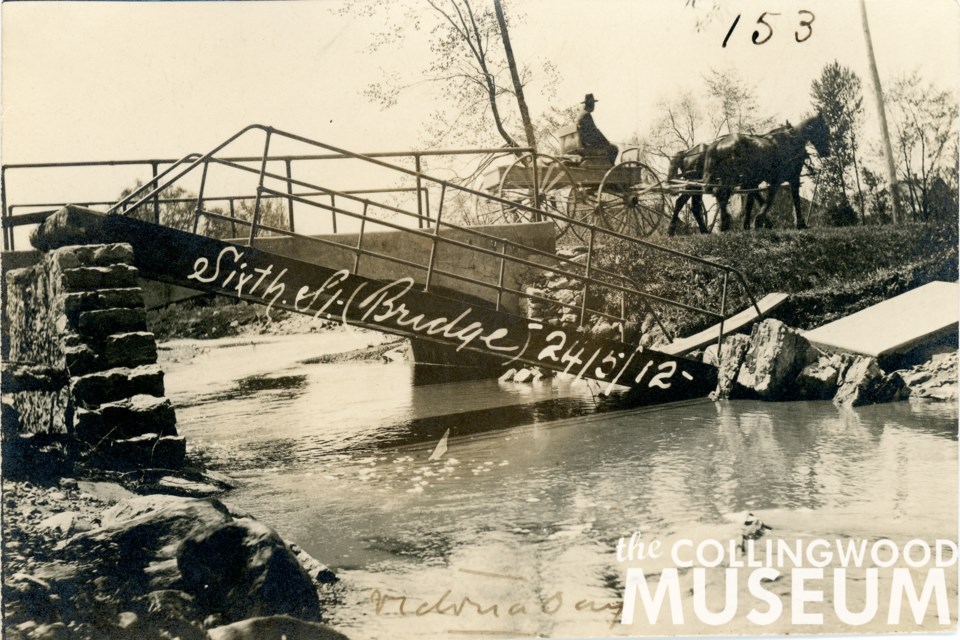After last week’s Remember This article gave some initial details of a Victoria Day flood in 1912, museum staff dove into Collingwood’s newspaper archive for some more details of the aftermath.
The Collingwood Bulletin reported on May 30, 1912, the damage done by the flood was the worst the town had seen in 30 years.
According to the article, Chairman Begg of the Board of Works committee delivered a report of the damages at a special meeting of the council.
The flooding washed out sand, gravel, and timbers on a road at the town’s south end. The intersection of Campbell and Hurontario Streets became a “great hole.”
A bridge on Eighth Street over Underwood Creek was moved “holus-bolus, not a plank left in the vicinity.” Even the abutments washed down the creek and gathered in a heap.
Another bridge - this one made of cement - on Sixth Street remained standing, but the foot bridge beside it was laying in the creek at the time the article was published. Photograph one shows the Sixth Street footbridge in the creek where the abutment has crumbled.
“The fine cement bridge on Fifth street is a wreck,” states the Bulletin piece. “The walls are undermined, the food bridge is in the water while the roadway and sidewalks are damaged to the extent of many hundreds of dollars.”
The bridge on Fifth Street was built a couple years before the flood at a cost of nearly $1,000. The restoration work required for the bridge was estimated around the same total.
The second photograph from the Collingwood Museum shows the wreckage along Fifth Street.
The article described Oak Street as a river bed from Sixth Street north. Photograph three shows a portion of Oak Street. A child stands in the centre of the photo off to the side of the washed out road. A woman and two children standing in the top right side of the photo are standing at the regular Oak Street elevation.
“West of Mr. E. R. Carpenter’s house, the roadbed was wholly carried away,” states the article.
Houses belonging to Mrs. Burgie and Mr. C. Gordon were damaged or “undermined” by the flood.
Based on the opinion of some members of the council, the repairs could cost as much as $20,000.
You can learn more about the Victoria Day flood of 1912 and Collingwood’s local history at the Collingwood Museum.
Photos from the Huron Institute 152 ,153, 161; Collingwood Museum Collection X969.279.1, X970.330.1, X969.226.1.
Remember This is a weekly series of historic photographs submitted by the Collingwood Museum to CollingwoodToday.ca. These photographs were originally collected and documented by the Huron Institute in an historical catalogue entitled Huron Institute Paper and Records: Volume III. Much of Collingwood’s early history has been preserved due to the dedication and foresight of the early museum’s founders, namely its secretary-curator David Williams, upon its establishment in 1904.

